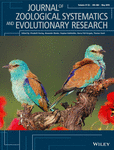Journal list menu
Export Citations
Download PDFs
Cover Image, Volume 57, Issue 2
- Page: i
- First Published: 10 April 2019
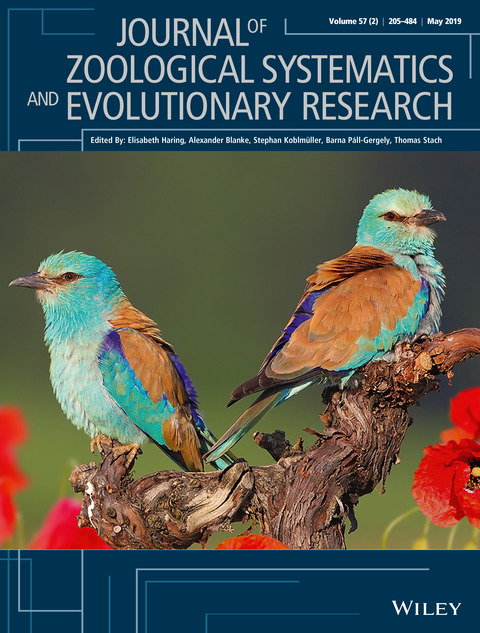
The cover image is based on the Original Article Witnessing extinction: Population genetics of the last European Rollers (Coracias garrulus) in Austria and a first phylogeographic analysis of the species across its distribution range, by Carina Nebel et al., https://doi.org/10.1111/jzs.12256. Cover image © Mag. Michael Tiefenbach.
Higher-level phylogenetic affinities of the Neotropical genus Mastigodryas Amaral, 1934 (Serpentes: Colubridae), species-group definition and description of a new genus for Mastigodryas bifossatus
- Pages: 205-239
- First Published: 03 February 2019
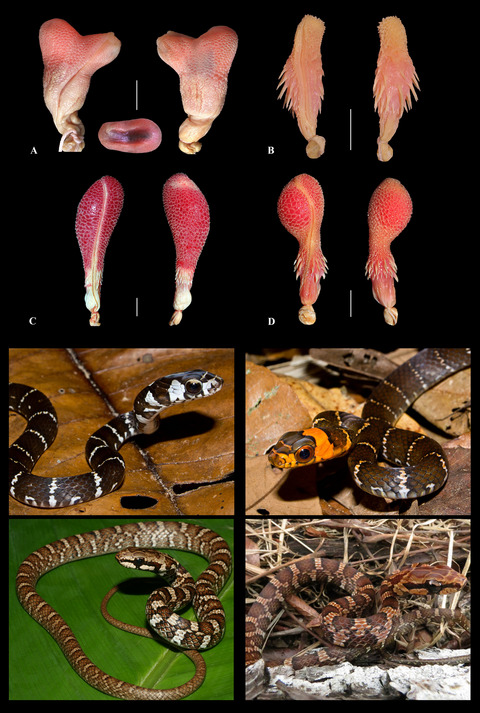
We explore the phylogenetic relationships of Mastigodryas by combining DNA sequence data and morphological data. Analyses demonstrate that non-random missing data and/or taxa in some empirical datasets can bias species tree analyses more than concatenation approaches. The genus is placed in a strongly supported clade that includes Drymarchon, Rhinobothryum, Drymoluber, Simophis and Leptodrymus. Mastigodryas bifossatus is more closely related to species of Drymoluber and Simophis than to its congeners. Thus, we redefine Mastigodryas and erect a new genus to accommodate M. bifossatus.
Phylogeny of the genus Aporcelinus Andrássy, 2009 (Nematoda: Dorylaimida: Aporcelaimidae) with description of two new species from Costa Rica
- Pages: 240-257
- First Published: 10 April 2019
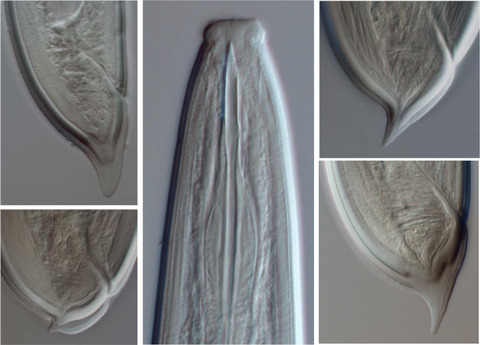
Two new and two known species of the genus Aporcelinus are characterized. The monophyly of Aporcelinus is confirmed on the basis of a definite and recognizable morphological pattern and a highly supported clade obtained by means of molecular genetic (D2-D3 28S rRNA gene sequences) analysis with Bayesian inference. Doubts are raised about the classification of Aporcelinus under Aporcelaimidae as a tentative closer relationship with Allodorylaimus, a member of the family Qudsianematidae, is suggested.
Footprints of unconventional mitochondrial inheritance in bivalve phylogeny: Signatures of positive selection on clades with doubly uniparental inheritance
- Pages: 258-271
- First Published: 16 October 2018
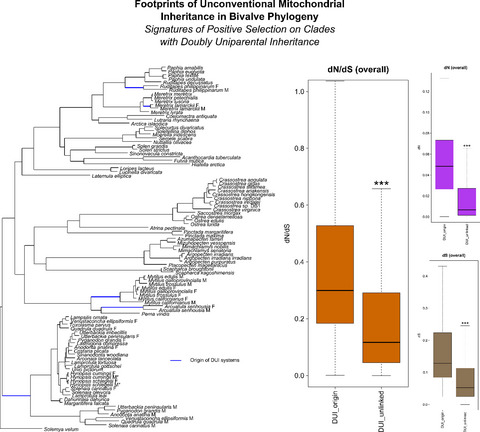
The doubly uniparental inheritance (DUI) of some bivalve mollusks is the major exception to the maternal inheritance of mitochondria in animals. The present paper investigates selective signatures left by the incipient DUI systems on mitochondrial genomes: Evidence is reported that distinct episodes of intense directional pressure are associated with the origins of different DUI systems; we interpret these signals as footprints of the coevolution with the nuclear genome that ought to take place at the base of a DUI clade.
Integrative taxonomy reveals a new Gammarus species (Crustacea, Amphipoda) surviving in a previously unknown southeast European glacial refugium
- Pages: 272-297
- First Published: 17 September 2018
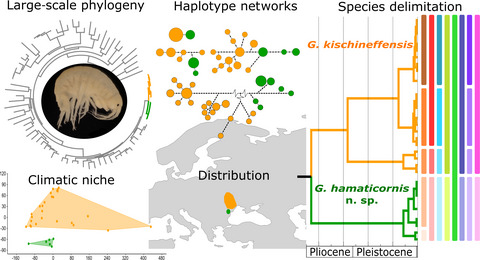
We used morphology, multilocus DNA sequences, distribution and climatic data to investigate the systematics, taxonomy, and evolutionary history of Gammarus hamaticornis n. sp., which belongs to a diverse, yet morphologically conserved genus. All datasets strongly supported the distinctiveness of the new species from its sister taxon. Its narrowly endemic distribution throughout the Dobrogea Plateau (NW Black Sea) coupled with its Pliocene age implies that this region served as a long-term glacial refugium, but also highlight the need for conservation.
Nuclear genes (but not mitochondrial DNA barcodes) reveal real species: Evidence from the Brenthis fritillary butterflies (Lepidoptera, Nymphalidae)
- Pages: 298-313
- First Published: 09 October 2018
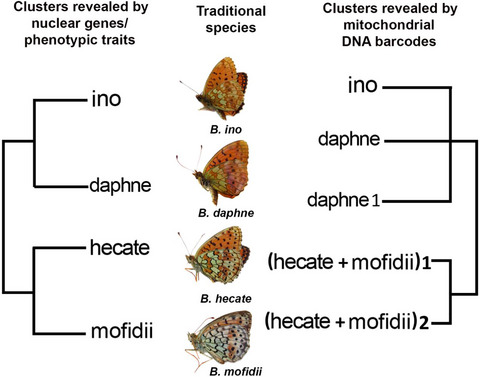
Discordance between entities revealed by nuclear versus mitochondrial genes is a common phenomenon, but little attention has been paid to analysis of how such discordant entities correspond to traditional species. In the butterfly genus Brenthis, analysis of mitochondrial DNA barcodes (COI) revealed several diverged lineages which were supported neither by nuclear genes nor by cladistics analysis of phenotypic traits. In case of the genus Brenthis, nuclear genes rather than mtDNA barcodes reveal real species boundaries.
Insights into chromosomal evolution of Cicadomorpha using fluorochrome staining and mapping 18S rRNA and H3 histone genes
- Pages: 314-322
- First Published: 11 November 2018
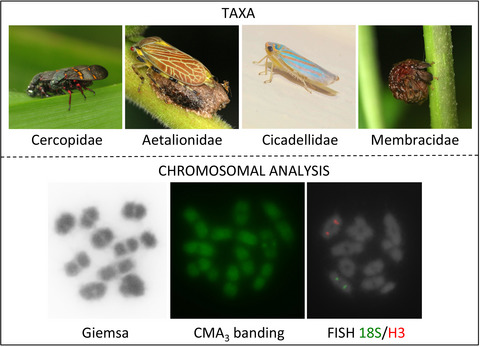
We analyzed the chromosomes of 19 cicadomorphan insects to shed light on karyotype evolution and chromosomal organization of repetitive DNAs. Our findings indicate that diploid numbers are variable and that X0 sex system is predominant. Low frequency of C+G-rich regions was observed, as well as a single locus of the 18S rRNA gene and of the H3 histone gene. Despite variation in diploid numbers, the distribution pattern of repetitive DNAs is more stable. Our data provide insights into chromosomal evolution in Cicadomorpha.
Morphology and evolution of the central nervous system in adult tunicates
- Pages: 323-344
- First Published: 11 September 2018
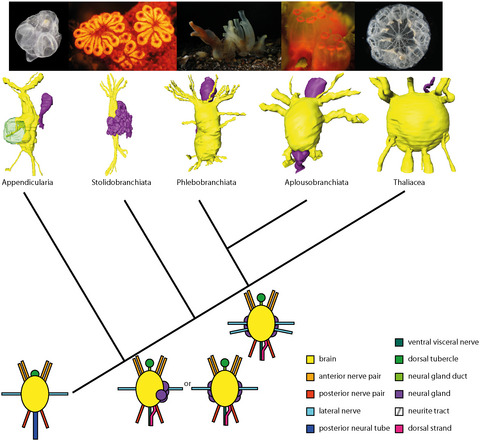
This study presents a large-scale comparative analysis of the morphology of the adult CNS of 18 tunicate species. We reconstructed three-dimensional anatomical models of the neural complexes and conducted immunohistological staining experiments. Now, more data on the neuroarchitecture are available. Our study reveals convergent evolution of characters, probably resulting from similar lifestyles, and considerable variation in the morphologies of the adult tunicate CNS on the interspecific level. Therefore, we conclude that nervous system characters in tunicates are phylogenetically informative.
Welcome back Janolidae and Antiopella: Improving the understanding of Janolidae and Madrellidae (Cladobranchia, Heterobranchia) with description of four new species
- Pages: 345-368
- First Published: 10 April 2019
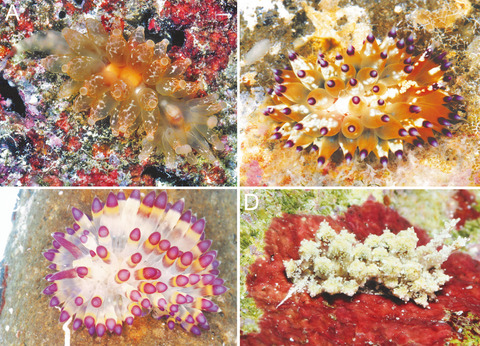
The four new species described in this manuscript: A. Madrella amphora Pola and Gosliner sp. nov. known only from Papua New Guinea; B. Janolus tricellariodes Pola and Gosliner sp. nov. from the western Pacific Ocean; C. Janolus flavoanulatus Pola and Gosliner sp. nov. from the Indian and western Pacific oceans; and D. Janolus incrustans Pola and Gosliner sp. nov. from the Marshall Islands and Indonesia.
Cryptic diversity revealed in the leaf-toed gecko Asaccus montanus (Squamata, Phyllodactylidae) from the Hajar Mountains of Arabia
- Pages: 369-382
- First Published: 07 December 2018
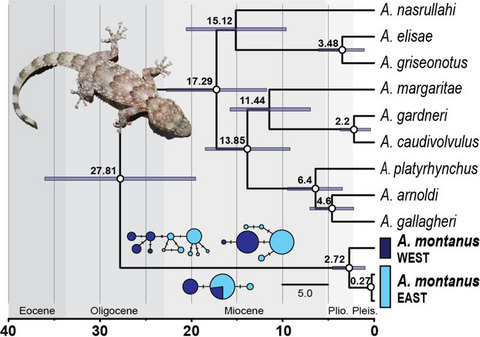
The gecko Asaccus montanus is endemic to Jebel Akhdar in the Hajar Mountains of Oman, an area regarded as a biodiversity and endemicity hotspot. The phylogeography of A. montanus and the phylogenetic relationships with other available Asaccus species uncover the presence of cryptic diversity within the species, with two deep allopatric lineages that diverged during the Late-Pliocene. Further taxonomic research is crucial due to the species’ vulnerable status and restricted range in an area of great conservation importance.
Low genetic divergence but many names in the endemic Patagonian frogs of the genus Atelognathus (Anura, Batrachylidae): A molecular genetic and morphological perspective
- Pages: 383-399
- First Published: 25 December 2018
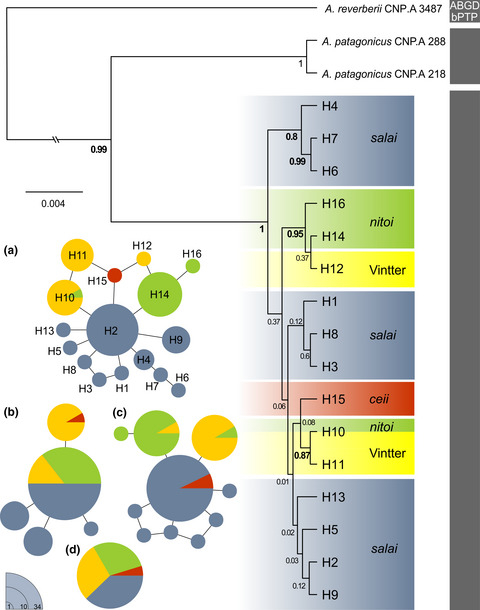
We evaluated the taxonomic status of Atelognathus nitoi, A. ceii, A. salai, and one unnamed population from Lago General Vintter using morphological characters and DNA sequences of cyt b, CR, and RAG1. Both DNA sequence data and morphological characters did not support the current taxonomy of the Atelognathus species studied. We found a single species under a geographic expansion process from southern populations, and we suggest that A. ceii and A. salai are junior synonyms of Atelognathus nitoi.
Incipient speciation, driven by distinct environmental conditions, in the marine catfishes of the genus Aspistor (Siluriformes, Ariidae), from the Atlantic coast of South America
- Pages: 400-417
- First Published: 03 February 2019
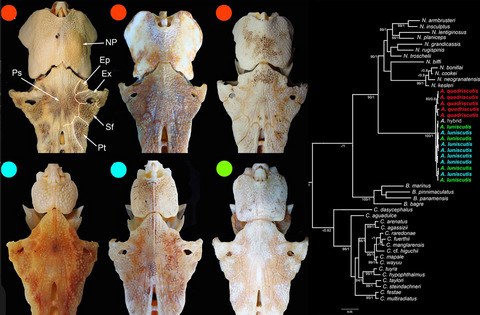
The Atlantic coast of South America is characterized by significant variation in environmental attributes and heterogeneous environments. Aspistor quadriscutis from the equatorial Amazon–Orinoco plume and A. luniscutis from the northeast to southeast coast of Brazil represent different morphological lineages, with distinct life habits and behavior, belonging to a single genetic lineage. This condition is related to the distinct ecological conditions. Intermediate morphological patterns, present in fossil species, together with the absence of genetic differentiation, characterize a process of incipient speciation.
Genetic structure of lake and stream populations in a Pyrenean amphibian (Calotriton asper) reveals evolutionary significant units associated with paedomorphosis
- Pages: 418-430
- First Published: 01 October 2018
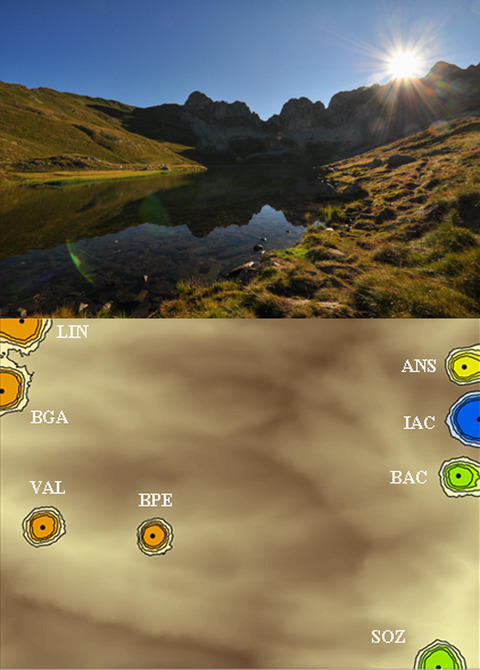
The rare lake populations of the Pyrenean brook newt Calotriton asper with individuals exhibiting paedomorphosis (retention of larval traits at the adult stage) constitute evolutionary significant units. Because of their genetic differentiation with surrounding stream and lake populations, they can be considered at a high risk of extinction due to the introduction of invasive species such as fish and chytrids that have already been found in some of them. Conservation measures should therefore target in priority these peculiar populations. Photograph: M. Denoël.
Variation in morphology and functional performance across distinct evolutionary lineages of the Moorish gecko (Tarentola mauritanica) from the Iberian Peninsula
- Pages: 431-444
- First Published: 17 September 2018
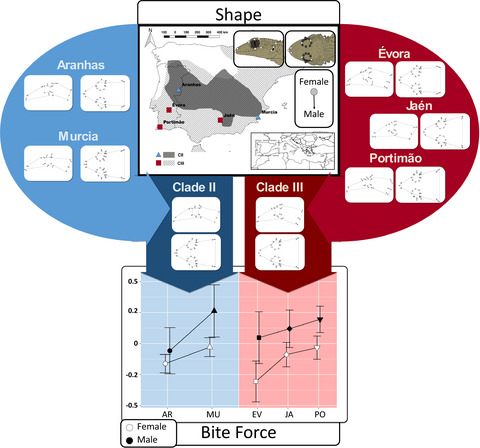
We used linear and geometric morphometrics to quantify morphological variation and investigated how it translates performance. We found marked morphological differences between clades, both in body size and head shape. However, differentiation is more strongly related to local variation and differences between the two clades concern how sexual variation is expressed. We observed straightforward links between head morphology and bite force mostly determined by size variation and sexual dimorphism.
Unexpected phylogenetic relationships within the world's largest limbless skink species (Acontias plumbeus) highlight the need for a review of the taxonomic status of Acontias poecilus
- Pages: 445-460
- First Published: 27 January 2019
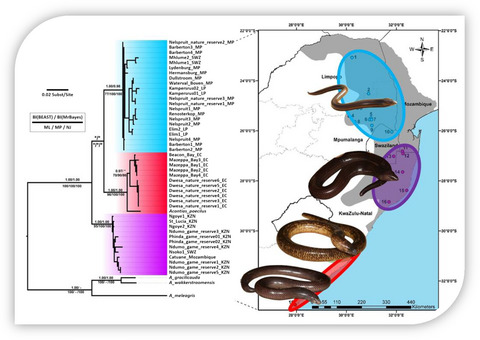
Acontias plumbeus consists of allopatric Northern, Eastern, and Southern clades, with the Northern and Southern groups being sister taxa. Populations of the Southern clade, which includes Acontias poecilus, are formed by smaller individuals than those of the Northern and Eastern clades. Both phylogenetic and morphological analyses suggest that A. poecilus should not be considered a valid species, but a junior synonym of A. plumbeus instead.
Witnessing extinction: Population genetics of the last European Rollers (Coracias garrulus) in Austria and a first phylogeographic analysis of the species across its distribution range
- Pages: 461-475
- First Published: 19 December 2018
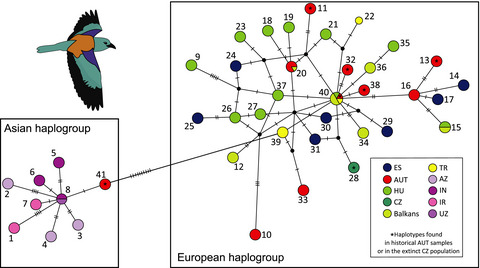
In this study, we present the first phylogeographic analysis for the species. On a broader scale, the European Roller is a species with high mitochondrial diversity and we distinguish two haplogroups that—with a few exceptions—reflect the classification of the two subspecies. Furthermore, we document the extinction of a relict European Roller population on a genetic level and a remarkable change of genetic structure within only a few generations.
New insights into the phylogenetic relationships among the oceanic dolphins (Cetacea: Delphinidae)
- Pages: 476-480
- First Published: 05 November 2018
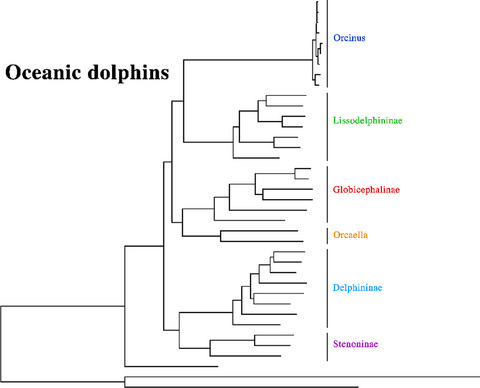
The phylogenetic relationships among the oceanic dolphins (family Delphinidae) are here presented based on complete mitochondrial genomes and Bayesian and Maximum Likelihood analyses. New phylogenetic relationships among subfamilies, genera, and species of the family have been found, which is very important for the study of their taxonomy, ecology, evolution, and conservation.
Mammalia. Handbook of Zoology
- Pages: 481-482
- First Published: 22 February 2019




